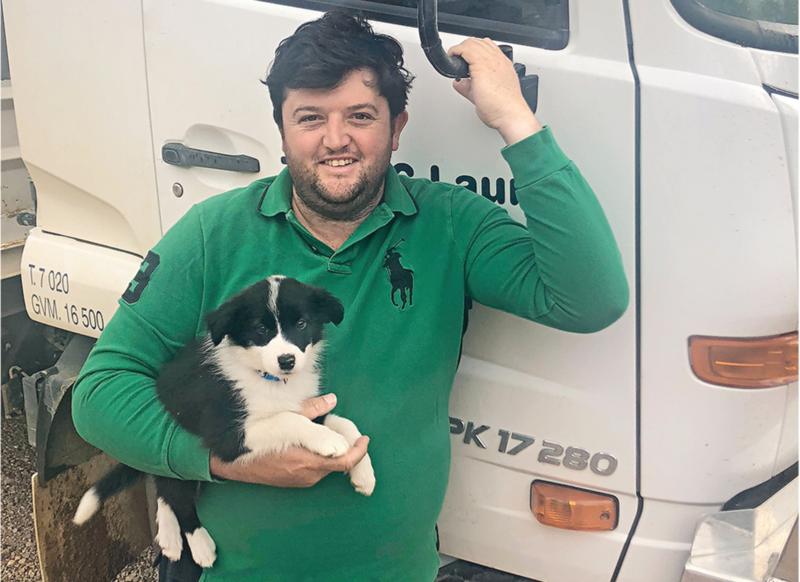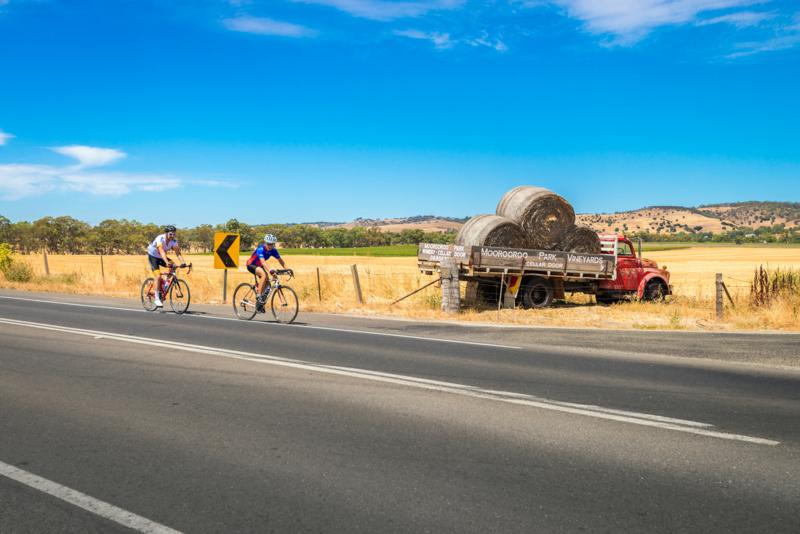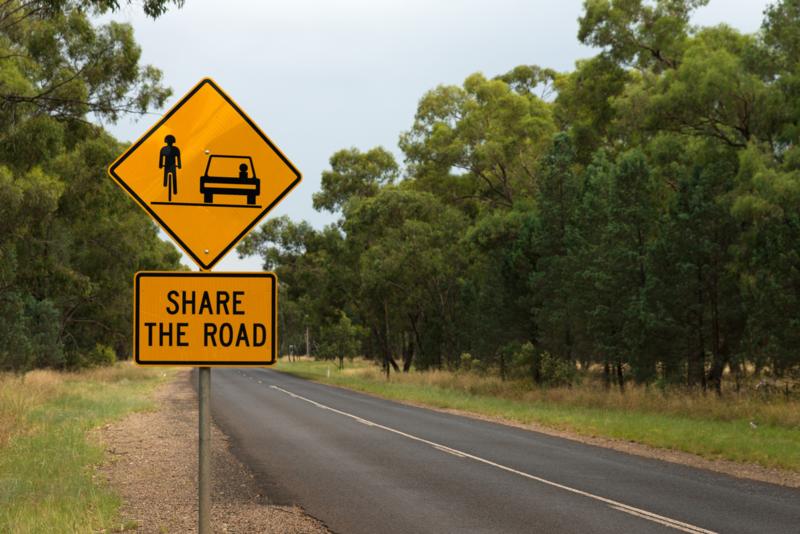I can understand what attracts people to go on long bike rides in the country – the peace and quiet, the fresh air and stunning vistas in every direction.
But, while it might sound idyllic, there are plenty of things that can, and do, go wrong and it’s time the laws were changed to make it safer for all road users.
I’m a fifth-generation farmer with a sheep, cattle and wool enterprise in Uralla on the Northern Tablelands. On most afternoons around here I see a lot of cyclists on the roads.
During the spring and autumn months, cycling clubs meet every weekend to go riding.
 Uralla farmer and NSW Farmers’ committee member Chris Laurie with his dog Trudy.
Country roads unable to cope with influx of cyclists
Uralla farmer and NSW Farmers’ committee member Chris Laurie with his dog Trudy.
Country roads unable to cope with influx of cyclists
The trouble is, country roads are not constructed to cope with this massive surge of bikes. Some cyclists might be more used to city traffic and lulled into a false sense of safety in the country. Others are well aware of potential issues but tend to ignore the needs of other vehicles on the road, which can be perilous.
Currently, the law demands that if motorists are travelling at more than 60km/h, they must give cyclists a minimum of 1.5m to pass them safely. If motorists are travelling less than 60km/h, they need to give cyclists 1m of space to pass.
This just doesn’t make sense in rural areas. We’re talking about narrow, winding roads with no lane markings, unsealed shoulders and soft verges. You can pass cyclists safely in some circumstances, but if they’re riding two abreast or in clusters you can quickly run into problems.
Having a sealed shoulder means cyclists have the space to move off the road to let a car or truck pass. If they can’t move over, or they’re travelling two abreast or more, the motorist is technically breaking the law when they pass.
“I’ve seen people overtake cyclists on blind crests and corners, which is hazardous to everybody.”
Matters are made worse at night when flashing bike lights can be blinding. There are often no street lights on country roads and, of course, cyclists need to be clearly seen. But when motorists are driving towards them, those lights can be like a spotlight glowing straight in their eyes. Then, once they overtake them, the lights reflect off the mirrors into the driver’s eyes.
Road rules must change to ensure safety in rural NSW
Dedicated bike paths would help, as would better education for cyclists and motorists alike. But the road rules need to change so that cyclists must ride in single file along narrow country roads, otherwise drivers are forced to break the law when they try to overtake them.
 Roads like this with a sealed shoulder would make rural cycling much safer. Source: Getty Images.
Roads like this with a sealed shoulder would make rural cycling much safer. Source: Getty Images.
Currently, the law is one size fits all. It doesn’t differentiate between a suburban street, a dual laneway in the city or a dimly-lit winding road with potholes out in the scrub.
“It needs to change or people will get killed.”
Cycling rules and statistics in Australia
- Cyclist deaths across Australia increased by 80% in 2017-18, jumping from 25 to 45 in 12 months.
- The number of bike rider fatalities has not decreased for two decades.
- Cyclists riding on rural roads are particularly at risk of being hit by motor vehicles travelling from behind in the same direction.
- Australian cyclists are permitted to ride alongside one another as long as they remain within 1.5m of each other.
- NSW drivers passing a cyclist in the same direction must leave at least 1m between car and bike when the speed limit is 60km/h or less, and 1.5m when it is higher than 60km/h.
- Since July 2018, children under 16 in NSW are allowed to ride on the footpath. An adult rider supervising the child may also ride on the footpath.
- More than 135,000 people have signed a change.org petition calling for cyclists to be made to ride in single file.
Sources: Australian Transport Safety Bureau & Bicycle Network CEO Craig Richards
 Rural roads like this, with no shoulder and narrow lanes, place cyclists in danger. Source: Getty Images.
NSW Farmers debated and carried numerous motions on road safety at its 2018 annual conference, including:
Rural roads like this, with no shoulder and narrow lanes, place cyclists in danger. Source: Getty Images.
NSW Farmers debated and carried numerous motions on road safety at its 2018 annual conference, including:
- That the Association negotiates with Roads & Maritime Services (RMS) for a minimum road width on which cyclists can ride two abreast.
- That NSW Farmers lobbies the NSW government for funding to provide more overtaking sections on increasingly busy rural highways, for example the Golden and Newell highways.
- That the Association lobbies for a streamlined accessible and practical solution to manage compliance documentation in respect to movement of agricultural machinery.
- That the Association lobbies the government and RMS to give a pilot vehicle the authority to stop oncoming traffic at a bridge to give the machinery the ability to access and clear the bridge in safety.
- That NSW Farmers lobbies the appropriate authority to, in non-urban areas: a) reduce reflectivity of roadside signage; b) remove any unnecessary roadside signage.
- That NSW Farmers lobbies the state government to allow an unregistered implement or farm equipment to be towed laden or unladen from farm to farm or to and from a place of repair or sale, on public roads within the legal requirements of the towing vehicle.
READ MORE ‘On My Soapbox’
-
Climate change wreaking havoc
-
Farmers want a bigger say in weed management
-
Fruit growers should focus on quality
-
Putting a price on conservation
* These are Chris’s personal views. If you would like to be ‘On my soapbox’ in a future issue of The Farmer, email: [email protected] or write to: The Farmer, Suite 53/26-32 Pirrama Rd, Pyrmont, NSW 2009. If your topic is chosen, a journalist will be in touch.